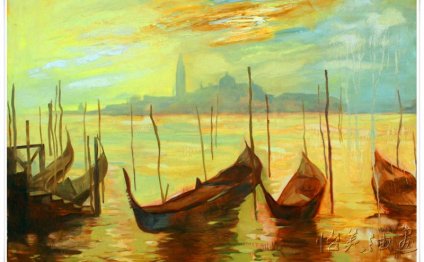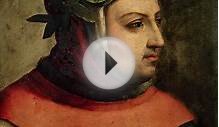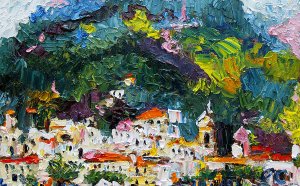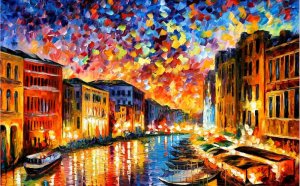
Italian oil Paintings
Fresco painting has been around for a very long time, examples of fresco painting techniques date back to at least 1500 BC. But the use of the medium became very prominent in the medieval and renaissance periods. There are three main painting mediums that were used in the renaissance, these are Fresco, (discussed here) and .
There are varying types of fresco, true fresco or Buon fresco is very permanent and consists of brush painting onto freshly applied, wet lime plaster (referred to as the intonaco.) Using water as the medium the paint is absorbed into the plaster as it dries and the pigment is bound into the structure of the plaster.
Wall painting was very popular in the renaissance era and fresco was the standard method of decoration.
The area to be painted was first covered with an under layer of plaster named the arriccio. Often the artists would sketch their compositions on this under layer in a red pigment called sinopia. The artist could not make changes in the composition of the painting and had only the drying time of the plaster in which to complete his work (about 8 or 9 hours).
Because of the drying time only enough was applied for a single days work. If mistakes were made the entire days layer of plaster would have to be removed.
The giornata is the name given to a single days work and in fresco paintings the dividing lines between differing days work can very often be seen. These seems between the layers of plaster were often hidden by an application of Secco fresco.
This is Adoration of the Magi and the artist has used both the Buon and Secco techniques in this painting.
Secco fresco is used on dry plaster, pigment is applied using egg or size as the medium and also as a binder for the paint. In the secco fresco technique the paint is not
absorbed into the structure of the plaster but forms a surface layer which tends to flake off and is therefore not so permanent as Buon fresco. Secco fresco is often used in conjunction with the buon method, secco is faster and allows for mistakes to be corrected.
A third type of fresco, mezzo-fresco, common at the end of the sixteenth century, was an intonaco that was painted when the surface was almost dry. The pigment only slightly penetrates the surface of the plaster retaining much of the colour that varied considerably when painting into wet plaster.
YOU MIGHT ALSO LIKE



Share this Post
Related posts
Oil Paintings of Italy
Jan Van Eyck is the Flemish painter often credited as the first master, or even the inventor of oil painting. That he was…
Read MoreOil Paintings Italy
The oil painting technique was to become dominant in the 15th and 16th centuries, it has remained as the artists favorite…
Read More





